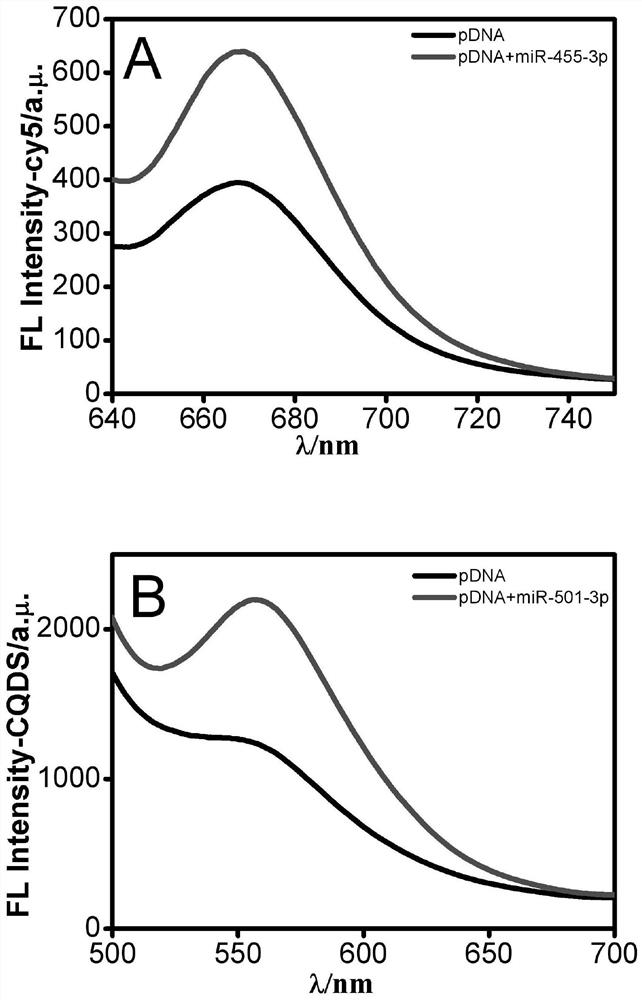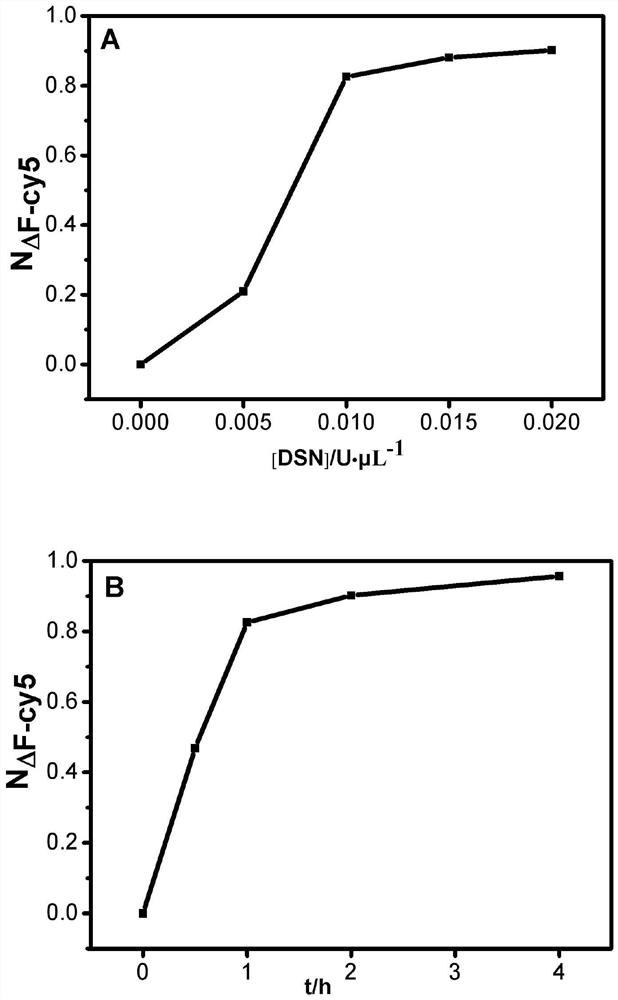Fluorescent biosensor for simultaneously detecting two kinds of RNA as well as preparation method and use method thereof
A biosensor and fluorescence technology, applied in the field of biosensing, can solve the problems of high detection cost, low sensitivity, and high detection limit, and achieve the effect of improving detection sensitivity, strong fluorescence, and low detection limit
- Summary
- Abstract
- Description
- Claims
- Application Information
AI Technical Summary
Problems solved by technology
Method used
Image
Examples
Embodiment 1
[0067] (1) Preparation and activation of carbon quantum dots
[0068] Carbon quantum dots were prepared by solvothermal synthesis. Put 0.9g of o-phenylenediamine and 90mL of ethanol in a 100mL polytetrafluoroethylene-lined autoclave, and react in an oven at 180°C for 12h to obtain an orange suspension of carbon quantum dots. Quantum dot crude product. After the fluorescent carbon dots were cooled to room temperature, they were washed by centrifugation with parameters set at 14000 rpm / min for 15 minutes. Further, after filtering through a 0.22 μm microporous membrane, the generated nano-carbon with larger particles is removed through a 1000 kd permeable membrane. The purified solution is freeze-dried to obtain solid powder carbon quantum dots.
[0069] A certain amount of EDC and NHS were weighed and dissolved in PBS solution to make the final concentration 100mM. 2 mg of carbon quantum dots were post-added to the above solution. After ultrasonication for 10 minutes, shake ...
PUM
| Property | Measurement | Unit |
|---|---|---|
| particle diameter | aaaaa | aaaaa |
Abstract
Description
Claims
Application Information
 Login to View More
Login to View More - R&D
- Intellectual Property
- Life Sciences
- Materials
- Tech Scout
- Unparalleled Data Quality
- Higher Quality Content
- 60% Fewer Hallucinations
Browse by: Latest US Patents, China's latest patents, Technical Efficacy Thesaurus, Application Domain, Technology Topic, Popular Technical Reports.
© 2025 PatSnap. All rights reserved.Legal|Privacy policy|Modern Slavery Act Transparency Statement|Sitemap|About US| Contact US: help@patsnap.com



